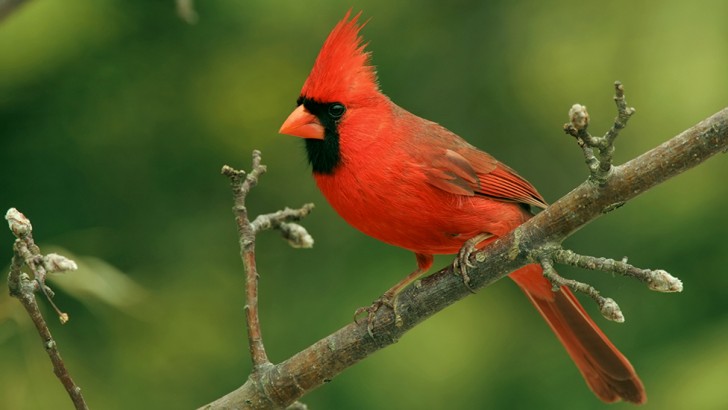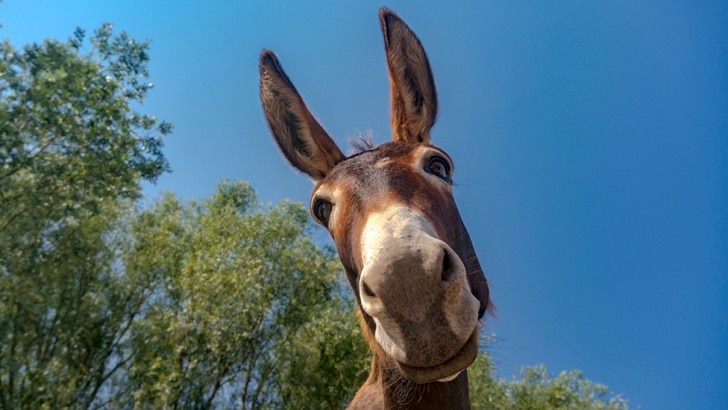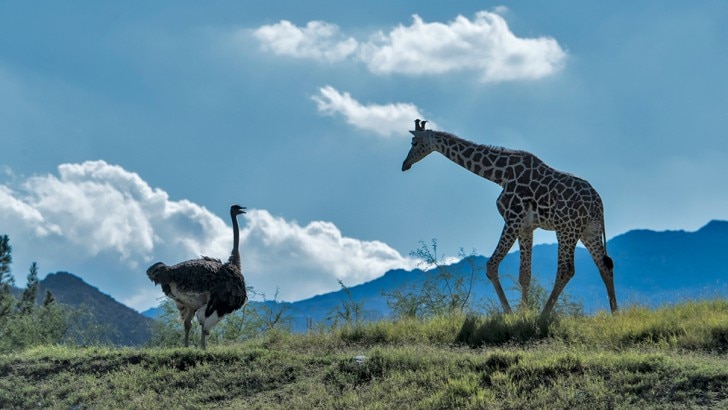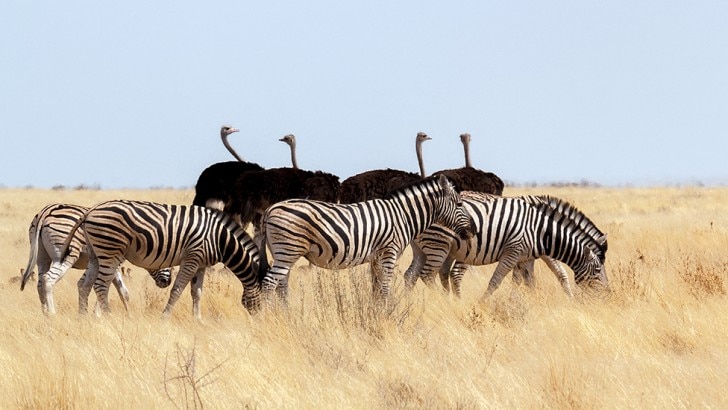BBC Earth newsletter
BBC Earth delivered direct to your inbox
Sign up to receive news, updates and exclusives from BBC Earth and related content from BBC Studios by email.
Animals
We’ve all seen videos like this shared extensively on social media: a dog riding a horse, ducklings trailing a cat, even a hamster apparently cuddling up with a snake.
We are fascinated by stories of interspecies friendships, the more unusual the better. But why do some animals appear to cosy up together in ways that would seem completely unsuitable, even wildly dangerous? Is it just a quirk of nature or is there some scientific reason behind it?

The meeting of unlikely animal companions often occurs in infant creatures who have been abandoned by a parent and require the protection of an adult to survive. The nurturing instinct in some animals seems irrepressible. Birds in particular seem prone to this kind of behavior, with examples of cardinals raising robin chicks, blackbirds feeding jays and baby birds of all stripes growing attached to human handlers who have raised them, following them wherever they go.
Other creatures have also displayed this powerful parenting instinct. A two-year-old chimpanzee called Anjana looked after two white tiger cubs, Mitra and Shiva, after they were separated from their mother at a wildlife sanctuary. Other orphaned infants that have developed an unusual bond include an otter and a badger named Brook and Bumble Bee at a wildlife rescue park in Somerset, while in Montana a skunk called Peanut who became a surrogate sibling to a lion cub named Annabelle. This malleable behaviour ensures that an infant animal and a nurturing mother can bond even between hunting species. The instinct to raise and protect a child overwhelms the differences between the creatures and suppresses any predatory behaviour.

Creatures in captivity, or kept in a domestic setting such as a farm, will often turn to each other for entertainment if companions from their own species are thin on the ground. Leading primate researcher Barbara Smuts witnessed her German shepherd Safi develop an endearing relationship with a donkey called Wister. At first Wister considered the dog a threat, but Safi persevered and eventually became the donkey’s constant play companion.
At a wildlife sanctuary in Florida, a giraffe named Bea was placed in the same enclosure as Wilma the ostrich. It was assumed the two creatures would keep their distance, but soon grew inseparable. And at the San Diego Zoo, a timber wolf and two goats, kept in adjoining pens, would race each other along the fence then rest together. Social animals will overcome any instinctual fear of a creature from a different species if the benefits of social activity outweigh the dangers of the unknown.

Sometimes the protective instincts of one creature will kick in when another is in danger. There’s a remarkable wildlife photo that shows a frog allowing a drowning rat to ride on its back in order to escape from a pond. Another incident involved a deer that stood guard over a Canadian goose nest situated in a busy cemetery. The deer fended off any advances from anyone coming near the bird.
Lulu became the ‘guide pig’ to a blind cow called Baby on a farm in Massachusetts, leading her to food and making sure she didn’t bump into things. While at another farm in the States, a goose and a Shetland pony formed a mutual friendship, which grew stronger when the horse became ill. The goose would flap, honk and attack any human that attempted to treat their pal. And there are numerous reports of whales and dolphins helping various other creatures in peril, including humans.
It’s not really known why animals would abandon their own self-preservation instinct to help another creature. Some cases could certainly be mistaken identity; one animal incorrectly identifies another as one of their own. But that’s hard to justify when it’s a goose and a pony. Though it’s always dangerous to overlay human emotions on animals, empathy appears to be in evidence in some of these cases.

Some interspecies interactions are not necessarily based on friendship, but on practical necessity. Coyotes predate badgers, but in some circumstances they have learnt to work together to hunt squirrels: the badgers dig into squirrel dens while the coyotes wait nearby to trap any fleeing nut munchers. Despite being enemies, they have discovered how to work together for their own gain.
Ostriches and zebras have been observed in close quarters, as both are prey to pack animals. But while ostriches have poor eyesight and zebras see well, zebras have a poor sense of smell and ostriches have highly developed olfactory function. Together, they offer each other much greater protection. Honey badgers are happy to be led to the beehives they love to feed from by the honeyguide bird, who they would otherwise snaffle as a snack. It may not be as cute as cats and duckings, but this kind of ingenuity occurs across the animal kingdom. They learn that siding with an enemy and working together is mutually beneficial.

There are some animal pairings that just can’t be explained. Rufous woodpeckers and tree ants are natural enemies. The birds eat the insects while the insects love to eat the birds’ eggs. And yet, every year, the woodpecker lays eggs within the black ants nest, which the ants completely ignore. Once hatched, the bird flies in and out of the nest freely feeding the young, while the ants, who usually would viciously attack any intruder, ignore them. Though there are theories, no one really knows why this happens.
Cats and birds are not known to be the best of pals, but on a farm in Suffolk a most-definitely feline Snowy adopted a chicken chick that survived a fox attack, washing and caring for it until they developed a solid friendship. In a Siberian zoo, a tiger befriended a goat that had been left in its enclosure as a meal. The big cat had happily eaten all the other goats offered to him as food, but decided to befriend this particular one and they became inseparable companions. One theory is that at the moment the goat entered the enclosure, the tiger was more lonely than he was hungry, so adopted the goat rather than chomping down on him. That lucky goat just happened to be in the right place at the right time. It seems that if one impulse overpowers another within an animal, completely unex
Featured image © Maria itina